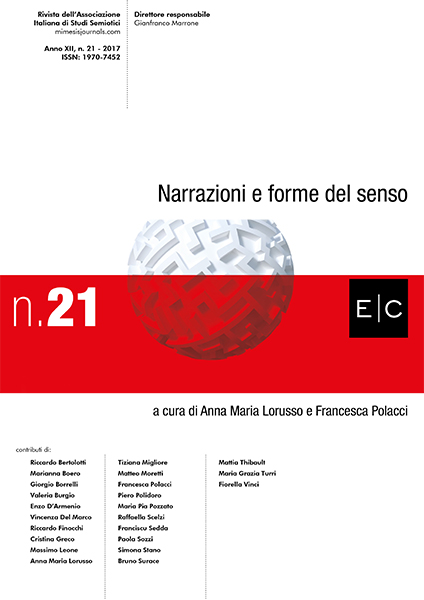Current Reconfigurations. The Visible, Narrative and Enunciative Guise of Interpretation
Abstract
Narrative, in Paul Ricoeur, is a universal principle of configuration of the experience of time, through the three mimesis: prefiguration – the preunderstanding that one brings to the systems of values and to the symbology of the story – configuration – the emplotment of the events, with actions and characters – and refiguration – the search for “creative means”, including the interpretation, whereby the narrative activity faces the aporia generated by the gulf between cosmic and phenomenological time. Ricoeur has insisted on the role of this third mimesis, as a medium between the world of the text and the world of life. He has specified its features, in particular: I] the derivation from the term “figure”, which implies its belonging to the order of the productive imagination, the creative activity of images with which the reader tries to figure out the characters and the events referred to by the text; II] a projective ability to shift from the present time to a future one.
The computerization of the press, enabling users today to intervene in the news received and to recreate and re-enunciate the photos that represent them, leaves more and more “attested” traces of this sense of interpretation. The act of reading on the Web is increasingly less private and mental and rather immanent and expressed in visible and sensitive form. It is now possible, for semiotics, to describe part of the hermeneutic processes and of an aesthetic of reception.
This article revises and updates the ricoeurian concept of refiguration, which becomes an instrument of analysis of the new ways of interpretation.



